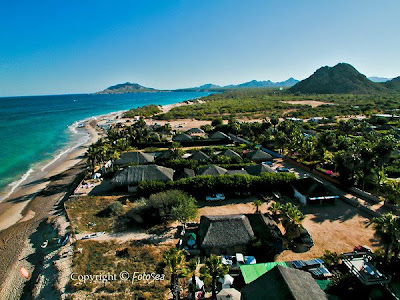I have been wondering lately how I am going to address Evolution and Creationism when I start teaching an introductory anthropology course this fall.
When I was in community college I had a professor who taught the Creationism/Evolution debate using what might best be called the Richard Dawkins model. He took a pretty hard line against creationists, and his class certainly sparked some strong reactions. However, there was often little room for opposing points of view, and I think that an anthropology course should always allow for that. I understood why my old professor took the position he did, but in the end I do not think it was a particularly effective way to initiate dialogue about the subject.
And that's why I prefer the way that people like Stephen Jay Gould address the subject. I do not think that creationism and evolution need necessarily be counterposed against one another. Maybe this is taking too much of a relativist position, maybe not.
Anthropologists spend a great deal of time studying and trying to understand very traditional/conservative social groups. The same kind of consideration, in my opinion, should be given to social groups within the United States. That's why I really appreciate the work of people like Susan Harding, who are taking the time to look into these kinds of belief systems with an open mind. In these often politically polemic times, when left/right and conservative/liberal monikers are thrown around so carelessly, I think that anthropologists can play a middle of the road role that serves to encourage dialogue and understanding across the divide.
UPDATE: From the American Anthropological Association's "Statement on Evolution and Creationism":
When I was in community college I had a professor who taught the Creationism/Evolution debate using what might best be called the Richard Dawkins model. He took a pretty hard line against creationists, and his class certainly sparked some strong reactions. However, there was often little room for opposing points of view, and I think that an anthropology course should always allow for that. I understood why my old professor took the position he did, but in the end I do not think it was a particularly effective way to initiate dialogue about the subject.
And that's why I prefer the way that people like Stephen Jay Gould address the subject. I do not think that creationism and evolution need necessarily be counterposed against one another. Maybe this is taking too much of a relativist position, maybe not.
Anthropologists spend a great deal of time studying and trying to understand very traditional/conservative social groups. The same kind of consideration, in my opinion, should be given to social groups within the United States. That's why I really appreciate the work of people like Susan Harding, who are taking the time to look into these kinds of belief systems with an open mind. In these often politically polemic times, when left/right and conservative/liberal monikers are thrown around so carelessly, I think that anthropologists can play a middle of the road role that serves to encourage dialogue and understanding across the divide.
UPDATE: From the American Anthropological Association's "Statement on Evolution and Creationism":
...anthropologists are encouraged to use their knowledge both of evolution and of human social and cultural systems to assist communities in which evolution and creationism have become contentious. Anthropologists should help the public and public officials understand that good science education requires that evolution be presented in the same manner as other well-supported scientific theories, without special qualifications or disclaimers, and that an understanding of religion and other cultural systems should be part of the education of each child.












